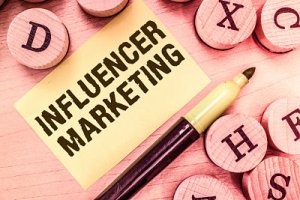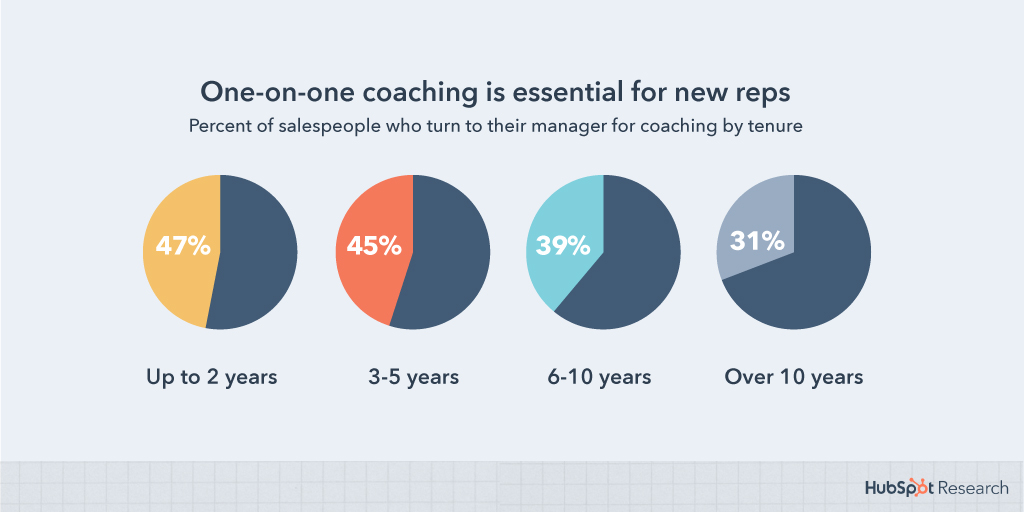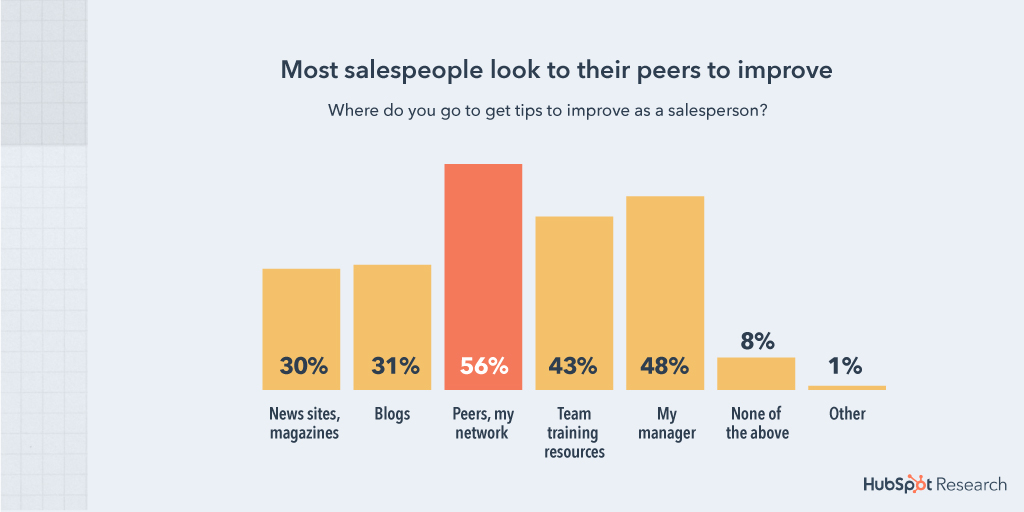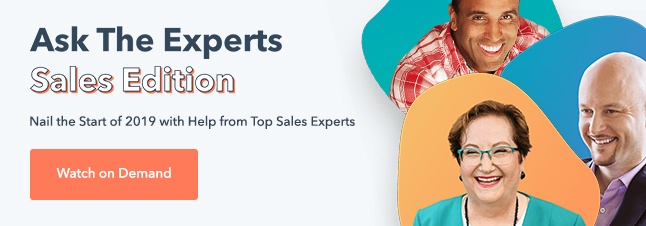This is a story about Jonathan Ward's obsessive approach to industrial design.

If you're an industrial designer, you'll recognize some parts of his process, and perhaps be envious of the parts you don't. If you're not an industrial designer, this story will show you how an experience or series of thoughts can be translated, through hard work and over time, into an extraordinary physical product.
PRELUDE
It's the 1920s, and an audacious American businessman named E.L. Cord wants to make the best cars in the world. And he wants to make them in America.
This is an absurd idea; everyone knows the best automobiles come from Europe and have names like Rolls-Royce, Mercedes-Benz, Hispano-Suiza. Cord's car doesn't even have a hyphen. It's going to be called the Duesenberg. That's the name of the Indianapolis-based carmaking firm run by brothers Fred and Augie Duesenberg, a pair of brilliant engineers who happen to be crap businessmen. Cord buys their failing firm, then tasks them with fulfilling his best-car-in-the-world mandate, backed with his money.
The resultant vehicle is unveiled at the 1928 New York Car Show (without a body; at the time it was typical to purchase a car of this class without one, so that you could have it added by the bespoke coachmaker of your choice). Once the public finally sees complete Model Js, the car is revealed to be a socks-knocker.
 1928 Duesenberg Model J
1928 Duesenberg Model J
"There wasn't a single part of this twenty-foot-long vehicle," Jalopnik would later write, "that didn't look like it was sculpted by Michelangelo." Fast, beautiful, elegant, stylish, expensive, the Duesenberg Model J puts Europe on blast. We can almost guarantee that at least one European auto designer had a cigarette fall out of his mouth when he saw the newspaper photos.
 1928 Duesenberg Model J
1928 Duesenberg Model J
"They were truly such a significant automobile when they were new," Duesenberg historian Randy Ema told The Robb Report. "Nothing else was comparable as far as power, speed and road ability." America had their non-hyphenate supercar.
 1928 Duesenberg Model J America also had the Great Depression. In the years following the car's launch, Cord's empire--he owned some 150 companies, besides Duesenberg--took a hit, and never bounced back. By 1937, both Cord and Duesenberg were kaput.
1928 Duesenberg Model J America also had the Great Depression. In the years following the car's launch, Cord's empire--he owned some 150 companies, besides Duesenberg--took a hit, and never bounced back. By 1937, both Cord and Duesenberg were kaput.
Left behind as a legacy:
1) The American phrase "it's a doozy," meaning extraordinary, splendid, stylish, outstanding.
 1935 Duesenberg Model SJ
1935 Duesenberg Model SJ
2) Several hundred surviving cars, including units of the Model SJ (above), a supercharged version of the Model J. A handful of these cars, preserved and restored, would appear decades later at a certain classic auto show in Pebble Beach.
____________
It's the 1990s, and design aficionado Jonathan Ward is prowling the grounds at the Concours d'Elegance for their Dawn Patrol. The cars roll onto the grounds at dawn. As the sun comes over the horizon, Canon and Nikon lenses rise to cover attendees' eyeballs. At this point in time, the Dawn Patrol is still a relatively uncrowded event where those willing to brave the hour can gawk and photograph the cars absent a mob.
There are shutterbugs standing back and shooting long; they want the poster shot of the entire car. Not Ward, who is right up on the metal. "I was never one to do wide shots of a complete vehicle," he says. "I'm on the cloisonné, I'm on the bumblebee hinge, the typeface, the dashboard."

Ward, drawn to details, is compulsively amassing them in a photo archive, which we'll get to in a minute. Of all the cars--or car details, more accurately--that he shoots that morning, one of them lodges in his brain. It's on a Duesenberg SJ that he comes across, and the dashboard features what will come to be one of his "all time favorite gauges ever:"
"It had what was called the drum style gauge and it's just a magical design."
To explain, a typical American gauge of that era featured an indicator needle that rotated around a dial:
 Typical dial gauge
Typical dial gauge
The Duesenberg featured a different design found on Rolls-Royces of the era. The indicator was a static line bisecting a rectangular window and did not move. Instead, the numbers moved. Digits were printed around the sides of a short, drum-like cylinder--hence the name--and this drum rotated in place behind the window, revealing the relevant number.
 Drum-style gauge in a Duesenberg dashboard
Drum-style gauge in a Duesenberg dashboard

Did it provide any performance advantage? No.
Was it cool? Yes.
Was it easier to manufacture, or more reliable, than a regular dial? No: "I've since learned," Ward says, "apparently they were horribly unreliable and usually removed and refit with the more conventional-style gauge."
I ask him why on Earth, then, would Duesenberg incorporate such a thing?
"To show that they had that capability," Ward explains. "They wanted to create the Rolls-Royce of America." The Duesenberg gauge's design intent was pure, but it exceeded the engineering capabilities of the era.
The gauge stuck in Ward's head, where it had plenty of company. At the time Ward was cooking up a plan to start TLC, a company that would grow into America's leading service center for the classic Toyota Land Cruiser. A decade after that he'd start Icon 4x4, the audacious design-build firm that established his name in the world of rugged-but-elegant custom automobiles. Running both of those companies would take a lot of mental energy. But not enough to make him forget the gauge.
FORMATIVE EXPERIENCES
"The first things I remember sketching as a kid were watches and cars."
As a child Ward was fascinated by the little machines his father and grandfather wore on their wrists, and he wanted to see more of them. "I'd go digging around in my dad's and my grandfather's attics, pulling out old watches they'd had in high school, and finding broken ones they'd left in junk drawers. They had a lot of great Deco stuff, watches from the '30s and '40s."
Ward pored over the faces, the little letters and numbers, the movements, studying the transitions between surfaces. Even at that early age, "I really appreciated the minute details and the design consideration that went into them," he recounts.

By the time an adult Ward attended the Pebble Beach event where he encountered the Duesenberg SJ, he'd amassed his own collection of watches. I ask him which he was wearing at the time, and he can't remember. "It might've been an Omega Moon Watch Speedmaster, a World War I trench watch, a 1937 Packard Salesman Award watch that was pocketwatch modified," he says, thinking. "I probably had 40 watches at the time."
To be in love with watches as a child, and to then get to purchase many coveted watches as an adult, sounds like it would be very satisfying. But Ward suffers from what we'll call the Designer's Curse.
DISSATISFACTION
Cars and watches intersect not only in the Passion part of Ward's brain, but also in the world of branded retail. Ward, a stickler for detail, finds that latter intersection often sloppily executed. "So many of the modern car-brand/watch-brand collaboratives are so shallow," Ward says. He objects to the practice of merely taking "the leather from the interior, and a badge or a similar typeface and slapping it on there. Come on, man--the potential is so much deeper than that. It's not just the leather, but the hardware on the car, the radiator cap, the hinges, there's so many things that represent the DNA of that vehicle. And as a consumer I've always yearned to see that integrated well."
This dissatisfaction extends beyond watches that are car-inspired. When Ward finds a lack of design in areas where heavy attention should be paid, it drives him nuts. "Even a Ressence--which is one of my favorite modern watch brands--there's zero consistency on typeface. For example, look at the numeral one on the back, look at the numeral one on this outer wheel, look at the numeral one on that inner wheel--they have nothing to do with each other.
"That kills me. Or take a Rolex: The typeface, the font on the date has nothing to do with anything else. You'll find six-, even seven-digit watches where that level of consideration in the design was never achieved. No one ever thought it through or cared."
The Designer's Curse is a two-part hex. The first part is that your senses are constantly scanning the world around you for errors in physical design. The second part is having to accept, via experience with manufacturing, that sometimes those errors have to be lived with. "You know and I know, [those flaws exist because] the watchmakers are dealing with an established network of suppliers who already have that widget with a generic type face already on the shelf."
Ward can't escape the first part of the curse. But it's his life mission to beat the second. "To get your design as perfect as you'd like it, you have to push back with that supplier, you have to wait longer, you have to pay more."
INSPIRATION
Given his background and skillset, it seems obvious that Ward would eventually put his money where his wrist is. "As a watch collector and lifelong watch geek, I've always looked at different ones and thought, 'I would make a killer watch.'"
Where should the inspiration come from? Do you start from scratch? Take one of your favorite watches and merely correct its flaws? For Ward the answer emerged from his car show photo archive. "About seven years ago I finally decided I really need to sort that image collection, which had gotten absurd--15,000 images or so.
"I broke it into categories for badges, grills, hinges, gauges, et cetera. And every time I'd see another exceptional vintage car, the design continuity of the gauges and how they relate to the rest of the vehicle, especially on early stuff, was always fascinating to me."

Thus we arrive at the drum gauges on the SJ Duesenberg. Rolls-Royce had them, Cadillac as well--why was it Duesenberg's that attracted Ward? "The presence of the Duesey drew me in," he says. "The aspirations of the brand and the design details of the SJ were magnetic."
While a drum gauge is a mechanically unlikely feature for a watch, Ward was smitten with that display method, which only reveals the currently relevant number. This has precedent in the watch world: "Jumping hour" watches reveal the hour in one window, a single digit at a time, with minutes shown in another. "I started to obsess," Ward says, "on that concept of a jump-hour based on the Duesenberg."
A design had begun brewing.

OBSESSION
To work out their ideas, some designers sketch. Others manipulate modeling materials. To some extent, the physical act of translating an idea in your brain into physical lines of graphite on paper, or armature wire on a workbench, provides a measure of relief.
Ward's sketchbook of choice is between his ears, so he can't leave it in the studio nor limit its hours of operation. "With any design idea I have, there's a period in time where it's like my version of a sheep jumping fences," he says. "I'll have a 3D model crafted in my odd brain and as I'm falling asleep, I'm altering chamfers or scaling or adding details, building out the model."
For Ward, this process is enough--until it's not. "It advances to an obsessive, out-of-my-control compulsion. There's some next level where it starts to be--not incapacitating, but to a point where I'm going to lose my remaining sanity if I can't get this out of my head. I need to see it done. I need to see it made."
COMPULSION, PART 1
Relief came in the form of a guy from a CAD company. "So as I had this mythical model growing in my head, we had developed a new friendship with the team at Autodesk," Ward says. They offered to send a tutor down. Through Icon, Ward already had a staff of CAD-whiz engineers who could race circles around him; but he "wanted to be able to at least comprehensively illustrate my intentions with a design before I introduce it to my engineers," so took the company up on it.
The tutor arrived, expecting they'd tackle automotive projects. Instead Ward saw an opportunity to cure his insomnia. "I sat down with this tutor once a week for eight months, and all of the work was based around the watch," he says.

CONSTRAINTS
A CAD file, once you pop it open, is a representation of a limitless space. But within that space, one designs objects that are defined by limits and constraints. "It's an interesting kind of struggle," Ward says. "Take one of my favorite designers, Raymond Loewy. I've noticed that if he was doing something for himself, meaning no constraints, it failed. If he was entertaining the manufacturing or budgetary restrictions or other factors imposed by the client, and working with a client's design director, with all of those constraints, his work was phenomenal. We need boundaries and borders to help us focus in on the core elements that need to be addressed.

"One of the neatest opportunities to me about watch design is all the constraints," says Ward. "The legibility, the math, the symmetry, the geometry of it, the size of the movements, and on and on. Those are exciting to me--they give you so many cool opportunities to take something further."
I ask Ward for an example; he's got three chambered. "You can go all the way down to the transition of a crystal to a case. When you study almost any watch, there's no flow to that. But the manufacturing capabilities of today, you can mandate one radius for the top surface of a crystal and a different radius for the lower inside surface of that crystal.
"You can do a special coating, or say 'I like that coating on this side, but I'd have better refraction if we did a double anti-reflective coating on the inside.
"Then there's branding, which often involves another typeface fuck up. The brand typeface in relation to all the other places that words and letters are used, there's often no consistency. And some watches have beautiful, super sanitary, clean design and then they just drop the big-ass logo on it--it's like "Oh, come on."
COMPULSION, PART 2
As smart as CAD programs are, they can't tell you when a design is "finished." For most designers, your boss or client dictates that. For Ward, after eight months of CAD, "shit started getting serious. We printed a bunch of prototypes. I kept tweaking them, then realized: 'This is good to go. I can actually make it.'"
Hoping to create the watch as a bad-ass one-off for himself, Ward attended the Baselworld Watch and Jewellery Show in Switzerland. "I talked to Svend Andersen and a couple makers, showing them parts of my design that would dovetail with their movements, breaking out ISO's to get some loose quotes. The prices were out of my league, so it was not going to happen."

On his way out of the show, something fell out of the sky and landed on Ward's head. That something was the peculiar arithmetic of industrial design, where you can't afford to make one of something, but you can afford to make fifty. With the development costs spread across multiple hypothetical buyers, what was impossible now merely becomes a pain in the ass.
"I got to thinking: I'm fascinated with industrial design. I'd like, long-term, to see Icon get into other aspects of ID. The brand came from both my love for automotive design, and my idea of how things could be engineered that I wasn't seeing done out there. So it seemed like an opportunity to take the same organic approach and do the watch.
"I came back, talked to my wife--who's Icon's COO--about it. And then we just went for it."
MANUFACTURING
Modeling a complex object in CAD can feel like running a marathon; then you get into manufacturing, which feels like climbing a mountain. "Once I had those CAD files done, I thought it was gonna be easy, like 'Let's go.' And then it took another year and a half, almost two years to get it through and ready for production," Ward recounts. "But most of it being my own fault.
"To me, the original purity of vision of the design intent must be established first. Then you have to go through the maze of addressing all those constraints and rules, which in the case of this project, I understood seven out of ten going in. The other three were 'Oh shit' moments that popped up on the road to creating it with our engineering partner in Switzerland. Those are the challenges where you think you've got it all lined up, then you find out 'The shank needs to be here, and for it to be here where you've put it, affects this other thing,' et cetera."
Another issue was the geography of the manufacturing. "I'm all into reviving the industrial American tradition," says Ward, "and I wanted to make the watch in the U.S., with all of the details just the way I wanted them done. But I found there's hardly any supplier network in the U.S. The way the crystal needed to be made, had to be in Switzerland. The way I wanted the dial made, it had to be in Switzerland.
"The complication that is required for the mechanical movement to do what I wanted to do, did not exist in the U.S. I would've had massive time and development cost to develop it. But that movement exists in Switzerland; in fact it's the exact movement used in watches that are double to quadruple the price point of the Duesey. It's proven, it's off the shelf, the engineering's already paid for."
I ask Ward what other off-the-shelf components exist in the watch. "The movement is off-the-shelf--that's it. The buckle, the tang, the crown, the case, the crystal, even the band--as a leather craft hobbyist, I designed the prototype band and sent it to Italy as the sample. I drove them crazy spec'ing out the exact finish, cut lines, creasing, skiving, every little thing, which was unbelievably rewarding. And stupid, for a run of 50 watches."
"Price-point-wise for me," Ward says, "the development costs were absurd."
____________________________
Up Next: Ward goes over the design details of the finished watch (and gets nuts with the package design). Stay tuned.






















 Canada has a rich history of innovation, but in the next few decades, powerful technological forces will transform the global economy. Large multinational companies have jumped out to a headstart in the race to succeed, and Canada runs the risk of falling behind. At stake is nothing less than our prosperity and economic well-being. The Financial Post set out explore what is needed for businesses to flourish and grow. You can find all of our coverage
Canada has a rich history of innovation, but in the next few decades, powerful technological forces will transform the global economy. Large multinational companies have jumped out to a headstart in the race to succeed, and Canada runs the risk of falling behind. At stake is nothing less than our prosperity and economic well-being. The Financial Post set out explore what is needed for businesses to flourish and grow. You can find all of our coverage 



















 Mark Schaefer is the chief blogger for this site, executive director of Schaefer Marketing Solutions, and the author of several best-selling
Mark Schaefer is the chief blogger for this site, executive director of Schaefer Marketing Solutions, and the author of several best-selling 
 The idea of a “sales process” has been around since long before I was offered my first sales role. The concept has been heavily promoted by the mainstream sales methodology vendors and adopted with varying degrees of effectiveness by many sales organisations.
The idea of a “sales process” has been around since long before I was offered my first sales role. The concept has been heavily promoted by the mainstream sales methodology vendors and adopted with varying degrees of effectiveness by many sales organisations.


 1928 Duesenberg Model J
1928 Duesenberg Model J 1928 Duesenberg Model J
1928 Duesenberg Model J  1928 Duesenberg Model J America also had the Great Depression. In the years following the car's launch, Cord's empire--he owned some 150 companies, besides Duesenberg--took a hit, and never bounced back. By 1937, both Cord and Duesenberg were kaput.
1928 Duesenberg Model J America also had the Great Depression. In the years following the car's launch, Cord's empire--he owned some 150 companies, besides Duesenberg--took a hit, and never bounced back. By 1937, both Cord and Duesenberg were kaput. 1935 Duesenberg Model SJ
1935 Duesenberg Model SJ
 Typical dial gauge
Typical dial gauge Drum-style gauge in a Duesenberg dashboard
Drum-style gauge in a Duesenberg dashboard















